Each year, like all educators, I think about new culminating activities that are meaningful and engaging. Inspired by Humans of New York on Facebook, I thought this concept would fit well into my Grade 11 Genocide and Crimes against Humanity course. In fact, the more posts I read, the more I realized how closely aligned they are to Facing History’s Scope and Sequence.
There were frequent posts exploring identity, membership, legacy and choosing to participate. The premise of Humans of New York is simple yet yields profound results: photographer and blogger Brandon Stanton captures pictures of New Yorkers and asks them a question. In turn, he presents intimate snapshots of one’s personal journey which range from heartbreaking to inspiring. The comment section is also a community; a place where strangers offer hope and encouragement and sometimes, when needed, a helping hand. I loved the interconnectedness and shared humanity between strangers and wondered how I could recreate this in the classroom.
The Nitty Gritty
 The Woodlands Secondary School, in Mississauga where I teach, is diverse and I wanted to capture these varied experiences. When I introduced the project “Humans of The Woodlands” to the class, most were familiar with Humans of New York. Nonetheless, I wanted them to look at these posts through a more critical lens. What resonates with them? Why are some photos captivating? How can we create questions that would elicit meaningful responses while also respecting someone’s privacy?
The Woodlands Secondary School, in Mississauga where I teach, is diverse and I wanted to capture these varied experiences. When I introduced the project “Humans of The Woodlands” to the class, most were familiar with Humans of New York. Nonetheless, I wanted them to look at these posts through a more critical lens. What resonates with them? Why are some photos captivating? How can we create questions that would elicit meaningful responses while also respecting someone’s privacy?
We examined Brandon’s blog, and then using Facing History’s Scope and Sequence, began to brainstorm questions for one theme. A lot of students chose identity, and using their journal began to brainstorm some questions. After individual reflection, they shared their questions with a small group and gave feedback to each other. They also made a list of at least three potential interviewees. They could be family members, students and staff at our school as well as community members.
Thanks to a Margot Stern Strom Innovation Grant, I was able to purchase good cameras, frames, and printing. Bringing in a photographer was also key to this project since I am no expert! The students were completely engaged and enthralled during this hands-on presentation. Our photographer highlighted some key angles for students to use as well as some artistic flourishes. She then encouraged them to play with the cameras in pairs and unleashed them around the school, experimenting with the different settings on the cameras as well as lenses. Their excitement was infectious.
 Another key component of this project was timing. Some of the students wanted to highlight the journey of a family member that lived far away but would be visiting over the holidays. As a result, they were given this project in early December and the deadline was early January. This gave all students ample time with their interviewees.
Another key component of this project was timing. Some of the students wanted to highlight the journey of a family member that lived far away but would be visiting over the holidays. As a result, they were given this project in early December and the deadline was early January. This gave all students ample time with their interviewees.
It was important to me, that this student project was celebrated outside of our classroom. Often, parents do not have a lot of opportunities to celebrate their child’s success at the high school level and I wanted this to be a community event as well. We had a showcase for the school during the day and then we opened up our doors to family and friends at night. The evening was a proud moment for all!
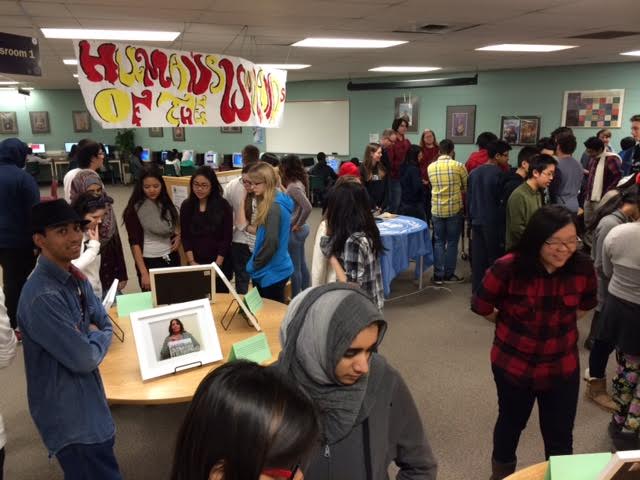 Show case for family and friends
Show case for family and friends
The results were impressive. My biggest fear was that the captions would be very superficial. The students however, did not disappoint!

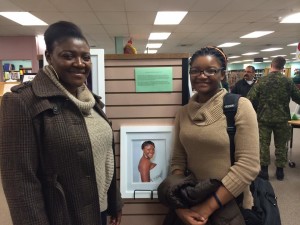
Nearly every student was engaged in this project. Their written reflections were thought-provoking as they made connections between the course content and their interviewee’s journey. It was a delight to take a moment to step back and watch the students engage with the different journeys around the room. We all gained something from this project; although our journeys may take different paths, the interconnectedness of our shared humanity is what creates community.
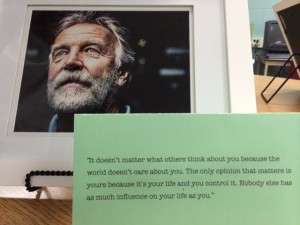
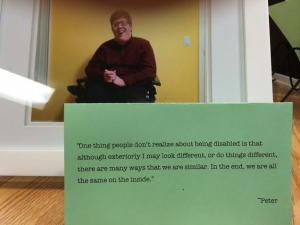

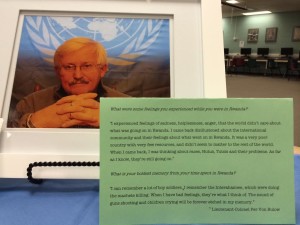
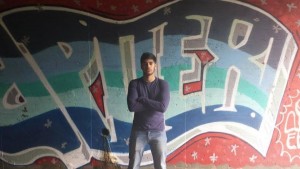 "I am myself. I am every physical part, every emotional trigger, every memory and every experience I've ever had. I believe that a person's experiences shape their personality, and that goes a long way.Happiness and success are the ultimate goals. There is no true definition of either because it is up to the person to decide what makes them happy. All I want in life is to be happy and successful, no matter what that means to me."
"I am myself. I am every physical part, every emotional trigger, every memory and every experience I've ever had. I believe that a person's experiences shape their personality, and that goes a long way.Happiness and success are the ultimate goals. There is no true definition of either because it is up to the person to decide what makes them happy. All I want in life is to be happy and successful, no matter what that means to me."
 "I know that the confidence I gain by accepting myself is worth so much more than any effort to "perfect" myself"
"I know that the confidence I gain by accepting myself is worth so much more than any effort to "perfect" myself"
What projects have you used that brought student learning alive? How have you created community in your classroom and school?


